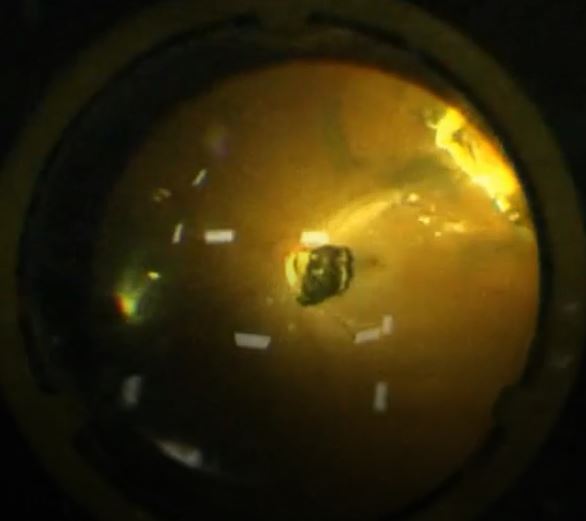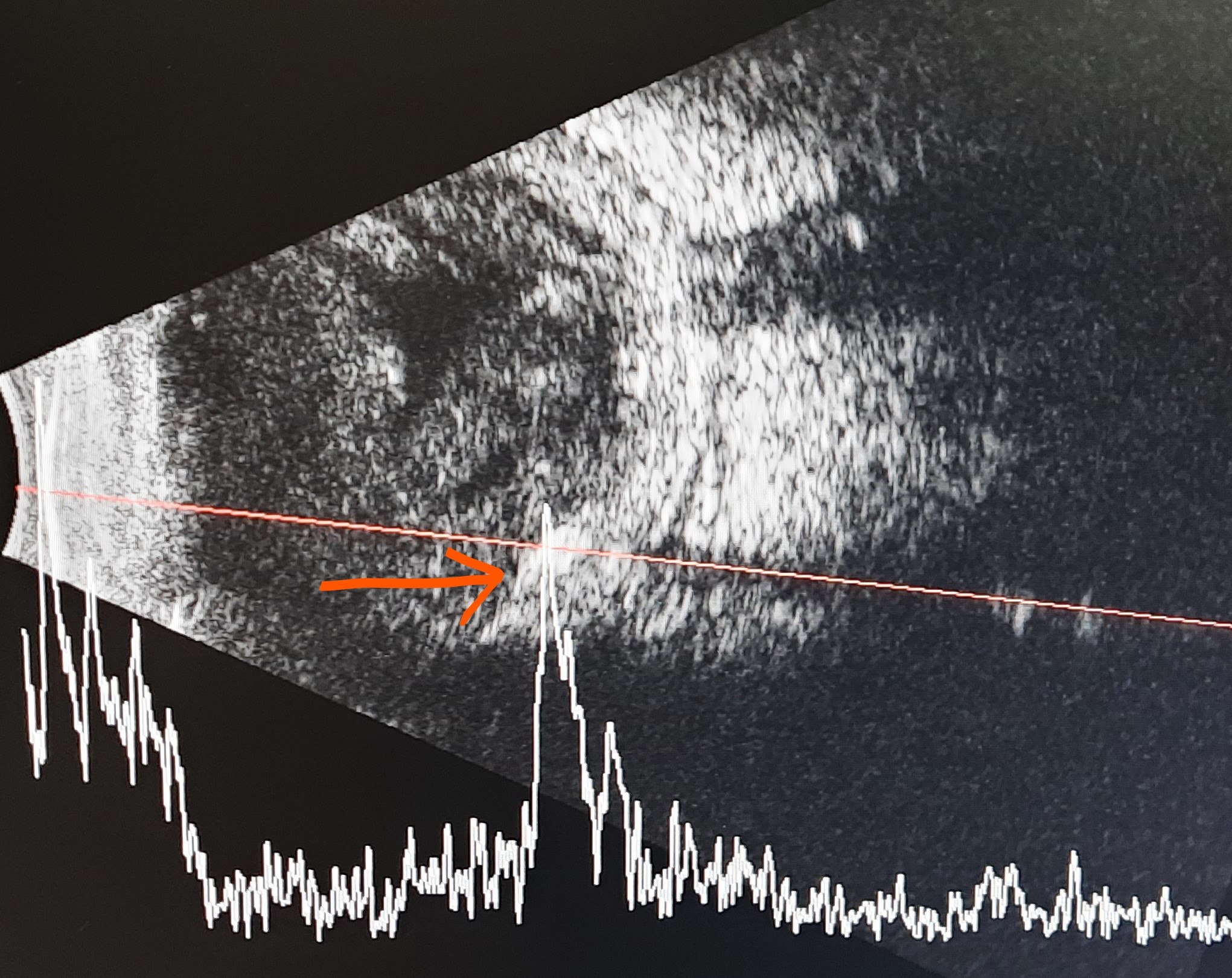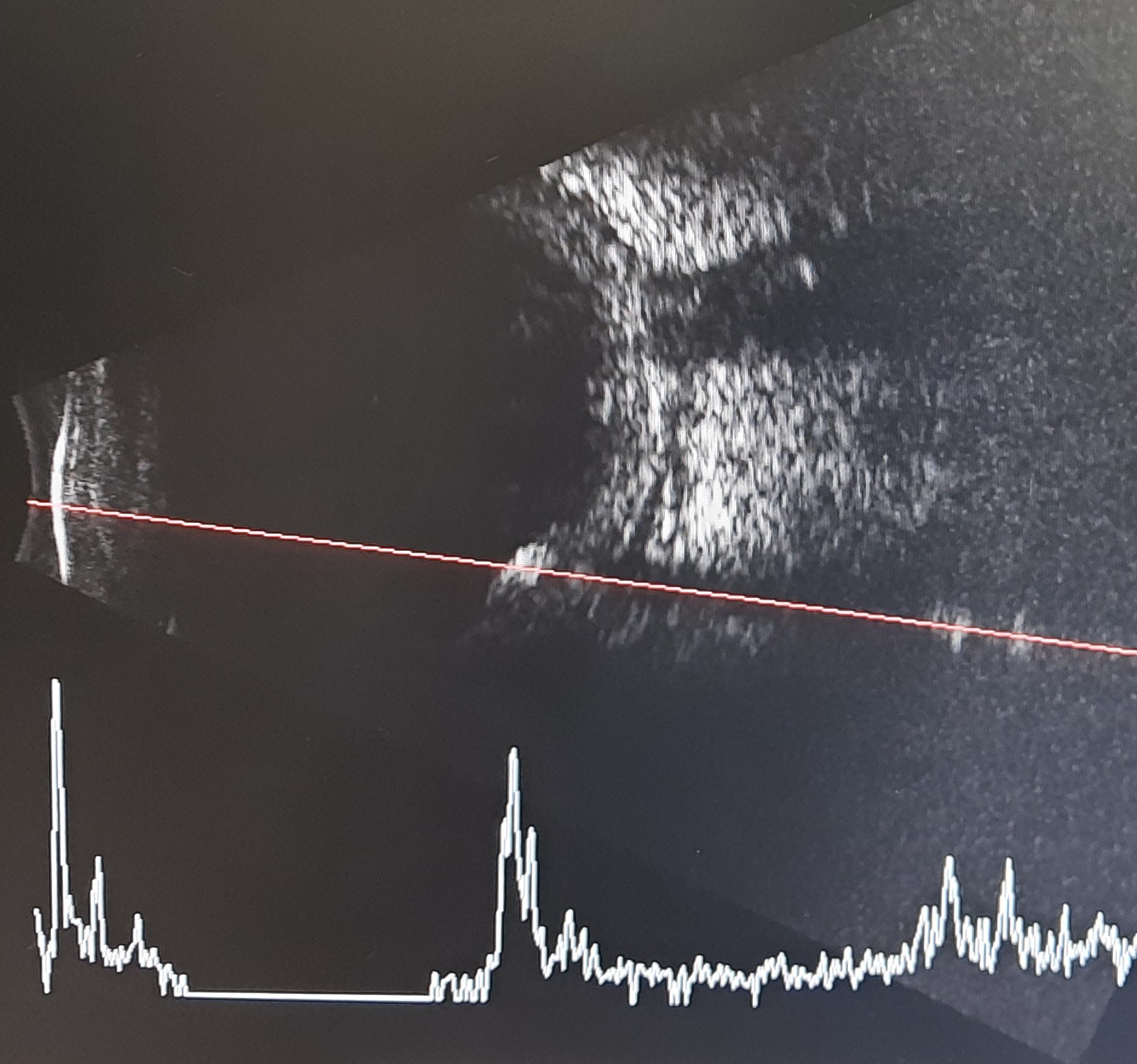[1]
Iftikhar M,Latif A,Farid UZ,Usmani B,Canner JK,Shah SMA, Changes in the Incidence of Eye Trauma Hospitalizations in the United States From 2001 Through 2014. JAMA ophthalmology. 2019 Jan 1;
[PubMed PMID: 30286226]
[2]
Patel SN,Langer PD,Zarbin MA,Bhagat N, Diagnostic value of clinical examination and radiographic imaging in identification of intraocular foreign bodies in open globe injury. European journal of ophthalmology. 2012 Mar-Apr;
[PubMed PMID: 21607931]
[3]
Zhang T,Zhuang H,Wang K,Xu G, Clinical Features and Surgical Outcomes of Posterior Segment Intraocular Foreign Bodies in Children in East China. Journal of ophthalmology. 2018;
[PubMed PMID: 30046460]
[4]
Chaudhry IA,Shamsi FA,Al-Harthi E,Al-Theeb A,Elzaridi E,Riley FC, Incidence and visual outcome of endophthalmitis associated with intraocular foreign bodies. Graefe's archive for clinical and experimental ophthalmology = Albrecht von Graefes Archiv fur klinische und experimentelle Ophthalmologie. 2008 Feb;
[PubMed PMID: 17468878]
[5]
Bourke L,Bourke E,Cullinane A,O'Connell E,Idrees Z, Clinical outcomes and epidemiology of intraocular foreign body injuries in Cork University Hospital, Ireland: an 11-year review. Irish journal of medical science. 2021 Aug;
[PubMed PMID: 33230610]
Level 2 (mid-level) evidence
[6]
Imrie FR,Cox A,Foot B,Macewen CJ, Surveillance of intraocular foreign bodies in the UK. Eye (London, England). 2008 Sep;
[PubMed PMID: 17525772]
[7]
Liggett PE,Gauderman WJ,Moreira CM,Barlow W,Green RL,Ryan SJ, Pars plana vitrectomy for acute retinal detachment in penetrating ocular injuries. Archives of ophthalmology (Chicago, Ill. : 1960). 1990 Dec;
[PubMed PMID: 2256844]
[8]
Azad RV,Kumar N,Sharma YR,Vohra R, Role of prophylactic scleral buckling in the management of retained intraocular foreign bodies. Clinical
[PubMed PMID: 14746594]
[9]
Liu CC,Tong JM,Li PS,Li KK, Epidemiology and clinical outcome of intraocular foreign bodies in Hong Kong: a 13-year review. International ophthalmology. 2017 Feb;
[PubMed PMID: 27043444]
Level 2 (mid-level) evidence
[10]
Justin GA,Baker KM,Brooks DI,Ryan DS,Weichel ED,Colyer MH, Intraocular Foreign Body Trauma in Operation Iraqi Freedom and Operation Enduring Freedom: 2001 to 2011. Ophthalmology. 2018 Nov;
[PubMed PMID: 30037644]
Level 2 (mid-level) evidence
[11]
Pieramici DJ,MacCumber MW,Humayun MU,Marsh MJ,de Juan E Jr, Open-globe injury. Update on types of injuries and visual results. Ophthalmology. 1996 Nov
[PubMed PMID: 8942873]
[12]
Esmaeli B,Elner SG,Schork MA,Elner VM, Visual outcome and ocular survival after penetrating trauma. A clinicopathologic study. Ophthalmology. 1995 Mar;
[PubMed PMID: 7891976]
[13]
Nicoară SD,Irimescu I,Călinici T,Cristian C, Intraocular foreign bodies extracted by pars plana vitrectomy: clinical characteristics, management, outcomes and prognostic factors. BMC ophthalmology. 2015 Nov 2
[PubMed PMID: 26526732]
[14]
Loporchio D,Mukkamala L,Gorukanti K,Zarbin M,Langer P,Bhagat N, Intraocular foreign bodies: A review. Survey of ophthalmology. 2016 Sep-Oct;
[PubMed PMID: 26994871]
Level 3 (low-level) evidence
[15]
Wang W,Zhou Y,Zeng J,Shi M,Chen B, Epidemiology and clinical characteristics of patients hospitalized for ocular trauma in South-Central China. Acta ophthalmologica. 2017 Sep;
[PubMed PMID: 28371405]
[16]
Liu Y,Wang S,Li Y,Gong Q,Su G,Zhao J, Intraocular Foreign Bodies: Clinical Characteristics and Prognostic Factors Influencing Visual Outcome and Globe Survival in 373 Eyes. Journal of ophthalmology. 2019;
[PubMed PMID: 30895158]
[17]
Wang JD,Xu L,Wang YX,You QS,Zhang JS,Jonas JB, Prevalence and incidence of ocular trauma in North China: the Beijing Eye Study. Acta ophthalmologica. 2012 Feb;
[PubMed PMID: 21883988]
[18]
Zhang Y,Zhang M,Jiang C,Qiu HY, Intraocular foreign bodies in china: clinical characteristics, prognostic factors, and visual outcomes in 1,421 eyes. American journal of ophthalmology. 2011 Jul;
[PubMed PMID: 21529762]
Level 2 (mid-level) evidence
[19]
Ehlers JP,Kunimoto DY,Ittoop S,Maguire JI,Ho AC,Regillo CD, Metallic intraocular foreign bodies: characteristics, interventions, and prognostic factors for visual outcome and globe survival. American journal of ophthalmology. 2008 Sep;
[PubMed PMID: 18614135]
[20]
Greven CM,Engelbrecht NE,Slusher MM,Nagy SS, Intraocular foreign bodies: management, prognostic factors, and visual outcomes. Ophthalmology. 2000 Mar;
[PubMed PMID: 10711903]
[21]
Fujikawa A,Mohamed YH,Kinoshita H,Matsumoto M,Uematsu M,Tsuiki E,Suzuma K,Kitaoka T, Visual outcomes and prognostic factors in open-globe injuries. BMC ophthalmology. 2018 Jun 8;
[PubMed PMID: 29884145]
[22]
Casini G,Sartini F,Loiudice P,Benini G,Menchini M, Ocular siderosis: a misdiagnosed cause of visual loss due to ferrous intraocular foreign bodies-epidemiology, pathogenesis, clinical signs, imaging and available treatment options. Documenta ophthalmologica. Advances in ophthalmology. 2021 Apr;
[PubMed PMID: 32949328]
Level 3 (low-level) evidence
[24]
Talamo JH,Topping TM,Maumenee AE,Green WR, Ultrastructural studies of cornea, iris and lens in a case of siderosis bulbi. Ophthalmology. 1985 Dec;
[PubMed PMID: 4088618]
Level 3 (low-level) evidence
[25]
Welch RB, Two remarkable events in the field of intraocular foreign body: (1) The reversal of siderosis bulbi. (2) The spontaneous extrusion of an intraocular copper foreign body. Transactions of the American Ophthalmological Society. 1975;
[PubMed PMID: 1108372]
[27]
Kannan NB,Adenuga OO,Rajan RP,Ramasamy K, Management of Ocular Siderosis: Visual Outcome and Electroretinographic Changes. Journal of ophthalmology. 2016
[PubMed PMID: 27073692]
[29]
Rao NA,Tso MO,Rosenthal AR, Chalcosis in the human eye. A clinicopathologic study. Archives of ophthalmology (Chicago, Ill. : 1960). 1976 Aug;
[PubMed PMID: 60098]
[30]
Ravani R,Kumar V,Kumar A,Kumar P,Chawla S,Ghosh S, Fleck-like deposits and swept source optical coherence tomography characteristics in a case of confirmed ocular chalcosis. Indian journal of ophthalmology. 2018 Nov;
[PubMed PMID: 30355890]
Level 3 (low-level) evidence
[31]
Puranik C,Chaurasia S,Ramappa M,Sangwan V,Balasubramanian D, Corneal chalcosis following blast injury. The British journal of ophthalmology. 2012 May
[PubMed PMID: 22317910]
[32]
MISHLER JE,HARLEY RD, Copper within the eye 30 years simulating tumor; report of a case. American journal of ophthalmology. 1952 May
[PubMed PMID: 14923740]
Level 3 (low-level) evidence
[33]
Brown IA, Intraocular foreign bodies. Nature of injury. International ophthalmology clinics. 1968 Spring
[PubMed PMID: 5731762]
[34]
Pereira F,Matieli L,Sacai PY,Salomão SR,Jung LS,Berezovsky A, Electrophysiological findings in delayed discovery of a metallic intraocular foreign body in a child: case report. Documenta ophthalmologica. Advances in ophthalmology. 2019 Dec;
[PubMed PMID: 31286364]
Level 3 (low-level) evidence
[36]
Bhagat N, Nagori S, Zarbin M. Post-traumatic Infectious Endophthalmitis. Survey of ophthalmology. 2011 May-Jun:56(3):214-51. doi: 10.1016/j.survophthal.2010.09.002. Epub 2011 Mar 12
[PubMed PMID: 21397289]
Level 3 (low-level) evidence
[37]
O'Duffy D,Salmon JF, Siderosis bulbi resulting from an intralenticular foreign body. American journal of ophthalmology. 1999 Feb;
[PubMed PMID: 10030572]
[38]
Meguro R, Asano Y, Odagiri S, Li C, Iwatsuki H, Shoumura K. Nonheme-iron histochemistry for light and electron microscopy: a historical, theoretical and technical review. Archives of histology and cytology. 2007 Apr:70(1):1-19
[PubMed PMID: 17558140]
[39]
Yang Z,Yang XL,Xu LS,Dai L,Yi MC, Application of Prussian blue staining in the diagnosis of ocular siderosis. International journal of ophthalmology. 2014
[PubMed PMID: 25349794]
[40]
Kutlutürk Karagöz I,Söğütlü Sarı E,Kubaloğlu A,Elbay A,Çallı Ü,Pinero DP,Özertürk Y,Yazıcıoğlu T, Characteristics of pediatric and adult cases with open globe injury and factors affecting visual outcomes: A retrospective analysis of 294 cases from Turkey. Ulusal travma ve acil cerrahi dergisi = Turkish journal of trauma
[PubMed PMID: 29350365]
Level 2 (mid-level) evidence
[41]
Poon KY, Use of limbal ring-rod for radiological localisation of ocular foreign body. The British journal of ophthalmology. 1989 Aug
[PubMed PMID: 2765445]
[42]
MINTZ MJ,MATTES MW, Detection of foreign bodies in the anterior chamber of the bulbus oculi. Radiology. 1960 Oct;
[PubMed PMID: 13771120]
[43]
Modjtahedi BS, Rong A, Bobinski M, McGahan J, Morse LS. Imaging characteristics of intraocular foreign bodies: a comparative study of plain film X-ray, computed tomography, ultrasound, and magnetic resonance imaging. Retina (Philadelphia, Pa.). 2015 Jan:35(1):95-104. doi: 10.1097/IAE.0000000000000271. Epub
[PubMed PMID: 25090044]
Level 2 (mid-level) evidence
[44]
Bryden FM,Pyott AA,Bailey M,McGhee CN, Real time ultrasound in the assessment of intraocular foreign bodies. Eye (London, England). 1990;
[PubMed PMID: 2282949]
[45]
Thickman DI,Ziskin MC,Goldenberg NJ,Linder BE, Clinical manifestations of the comet tail artifact. Journal of ultrasound in medicine : official journal of the American Institute of Ultrasound in Medicine. 1983 May
[PubMed PMID: 6864869]
[47]
Crowell EL,Koduri VA,Supsupin EP,Klinglesmith RE,Chuang AZ,Kim G,Baker LA,Feldman RM,Blieden LS, Accuracy of Computed Tomography Imaging Criteria in the Diagnosis of Adult Open Globe Injuries by Neuroradiology and Ophthalmology. Academic emergency medicine : official journal of the Society for Academic Emergency Medicine. 2017 Sep;
[PubMed PMID: 28662312]
[48]
Cho WK,Ko AC,Eatamadi H,Al-Ali A,Abboud JP,Kikkawa DO,Korn BS, Orbital and Orbitocranial Trauma From Pencil Fragments: Role of Timely Diagnosis and Management. American journal of ophthalmology. 2017 Aug;
[PubMed PMID: 28554552]
[49]
Pavlin CJ,Foster FS, Ultrasound biomicroscopy. High-frequency ultrasound imaging of the eye at microscopic resolution. Radiologic clinics of North America. 1998 Nov;
[PubMed PMID: 9884687]
[50]
Dada T,Sihota R,Gadia R,Aggarwal A,Mandal S,Gupta V, Comparison of anterior segment optical coherence tomography and ultrasound biomicroscopy for assessment of the anterior segment. Journal of cataract and refractive surgery. 2007 May
[PubMed PMID: 17466858]
[51]
Wylegala E,Dobrowolski D,Nowińska A,Tarnawska D, Anterior segment optical coherence tomography in eye injuries. Graefe's archive for clinical and experimental ophthalmology = Albrecht von Graefes Archiv fur klinische und experimentelle Ophthalmologie. 2009 Apr;
[PubMed PMID: 18766361]
[52]
Mansouri K,Sommerhalder J,Shaarawy T, Prospective comparison of ultrasound biomicroscopy and anterior segment optical coherence tomography for evaluation of anterior chamber dimensions in European eyes with primary angle closure. Eye (London, England). 2010 Feb;
[PubMed PMID: 19444291]
[54]
Kuhn F,Witherspoon CD,Skalka H,Morris R, Improvement of siderotic ERG. European journal of ophthalmology. 1992 Jan-Mar
[PubMed PMID: 1638168]
[55]
Gupta S,Midha N,Gogia V,Sahay P,Pandey V,Venkatesh P, Sensitivity of multifocal electroretinography (mfERG) in detecting siderosis. Canadian journal of ophthalmology. Journal canadien d'ophtalmologie. 2015 Dec;
[PubMed PMID: 26651311]
[57]
Rosenthal AR,Marmor MF,Leuenberger P,Hopkins JL, Chalcosis: a study of natural history. Ophthalmology. 1979 Nov;
[PubMed PMID: 552619]
[58]
Sahay P,Kumawat D,Gupta S,Tripathy K,Vohra R,Chandra M,Venkatesh P, Detection and monitoring of subclinical ocular siderosis using multifocal electroretinogram. Eye (London, England). 2019 Oct;
[PubMed PMID: 31019264]
[59]
Mieler WF,Ellis MK,Williams DF,Han DP, Retained intraocular foreign bodies and endophthalmitis. Ophthalmology. 1990 Nov;
[PubMed PMID: 2255525]
[60]
Valera-Cornejo D,García-Roa M,Ramírez-Neria P,Villalpando-Gómez Y,Romero-Morales V,García-Franco R, The role of various imaging techniques in identifying and locating intraocular foreign bodies related to open-globe injury: three case reports and literature review. Medwave. 2020 Jan 28
[PubMed PMID: 32119652]
Level 3 (low-level) evidence
[61]
Delgado E, Endophthalmitis due to an intra-ocular linear foreign body in a cat. JFMS open reports. 2015 Jan-Jun
[PubMed PMID: 28491351]
[62]
Vlasov A,Ryan DS,Ludlow S,Coggin A,Weichel ED,Stutzman RD,Bower KS,Colyer MH, Corneal and Corneoscleral Injury in Combat Ocular Trauma from Operations Iraqi Freedom and Enduring Freedom. Military medicine. 2017 Mar;
[PubMed PMID: 28291461]
Level 2 (mid-level) evidence
[63]
Arora R,Sanga L,Kumar M,Taneja M, Intralenticular foreign bodies: report of eight cases and review of management. Indian journal of ophthalmology. 2000 Jun
[PubMed PMID: 11116507]
Level 3 (low-level) evidence
[64]
Lin YC, Kuo CL, Chen YM. Intralenticular foreign body: A case report and literature review. Taiwan journal of ophthalmology. 2019 Jan-Mar:9(1):53-59. doi: 10.4103/tjo.tjo_88_18. Epub
[PubMed PMID: 30993070]
Level 3 (low-level) evidence
[65]
Davidson RS,Sivalingam A, A metallic foreign body presenting in the anterior chamber angle. The CLAO journal : official publication of the Contact Lens Association of Ophthalmologists, Inc. 2002 Jan;
[PubMed PMID: 11838993]
[66]
Mete G,Turgut Y,Osman A,Gülşen U,Hakan A, Anterior segment intraocular metallic foreign body causing chronic hypopyon uveitis. Journal of ophthalmic inflammation and infection. 2011 Jun
[PubMed PMID: 21484173]
[67]
Chow DR,Garretson BR,Kuczynski B,Williams GA,Margherio R,Cox MS,Trese MT,Hassan T,Ferrone P, External versus internal approach to the removal of metallic intraocular foreign bodies. Retina (Philadelphia, Pa.). 2000
[PubMed PMID: 10950413]
[68]
Rong AJ,Fan KC,Golshani B,Bobinski M,McGahan JP,Eliott D,Morse LS,Modjtahedi BS, Multimodal imaging features of intraocular foreign bodies. Seminars in ophthalmology. 2019
[PubMed PMID: 31609153]
[69]
Machemer R, A new concept for vitreous surgery. 2. Surgical technique and complications. American journal of ophthalmology. 1972 Dec;
[PubMed PMID: 4646708]
[70]
Lal T,Yu ZX,Guan B,Bender C,Chan CC,Cukras CA,Hufnagel RB, Clinical and Histopathologic Correlates of Asymmetric Retinitis Pigmentosa. JAMA ophthalmology. 2021 Sep 1;
[PubMed PMID: 34351381]
[71]
McGahan MC,Bito LZ,Myers BM, The pathophysiology of the ocular microenvironment. II. Copper-induced ocular inflammation and hypotony. Experimental eye research. 1986 Jun;
[PubMed PMID: 3720874]
[72]
Tripathy K,Tomar AS,Sidhu T,Dada T, A 10-year-old boy with dystonia, expression-less facies, and tremors referred for ophthalmic examination. Oman journal of ophthalmology. 2021 May-Aug
[PubMed PMID: 34345153]
[73]
Sridhar U,Tripathy K, Commentary: Kayser-Fleischer-like rings in patients with hepatic disease. Indian journal of ophthalmology. 2021 May
[PubMed PMID: 33913838]
Level 3 (low-level) evidence
[74]
Cheraghali F,Fadaei Jouybari F,Tohidi F,Ghasemikhah R,Taghipour A,Sharbatkhori M, Seroprevalence, risk factors, and clinical symptoms of Toxocara spp. infection among children 3-15 years old in northern Iran. Comparative immunology, microbiology and infectious diseases. 2021 Jun;
[PubMed PMID: 33819773]
Level 2 (mid-level) evidence
[75]
Ma J,Wang Y,Zhang L,Chen M,Ai J,Fang X, Clinical characteristics and prognostic factors of posterior segment intraocular foreign body in a tertiary hospital. BMC ophthalmology. 2019 Jan 14;
[PubMed PMID: 30642294]
[76]
Dowlut MS,Curragh DS,Napier M,Herron B,McIlwaine G,Best R,Chan W, The varied presentations of siderosis from retained intraocular foreign body. Clinical
[PubMed PMID: 29923333]
[77]
Anderson G,Horvath J, The growing burden of chronic disease in America. Public health reports (Washington, D.C. : 1974). 2004 May-Jun
[PubMed PMID: 15158105]
[78]
Jonas JB, Knorr HL, Budde WM. Prognostic factors in ocular injuries caused by intraocular or retrobulbar foreign bodies. Ophthalmology. 2000 May:107(5):823-8
[PubMed PMID: 10811069]
[79]
Yucel OE,Demir S,Niyaz L,Sayin O,Gul A,Ariturk N, Clinical characteristics and prognostic factors of scleral rupture due to blunt ocular trauma. Eye (London, England). 2016 Dec
[PubMed PMID: 27589050]
[80]
Yang CS,Hsieh MH,Hou TY, Predictive factors of visual outcome in posterior segment intraocular foreign body. Journal of the Chinese Medical Association : JCMA. 2019 Mar
[PubMed PMID: 30913120]
[81]
Konforty N,Lior Y,Levy J,Belfair N,Bilenko N,Lifshitz T,Klemperer I,Knyazer B, [EPIDEMIOLOGY, CLINICAL CHARACTERISTICS, PROGNOSTIC FACTORS, AND VISUAL OUTCOMES IN PATIENTS WITH OPEN OCULAR INJURIES AND INTRAOCULAR FOREIGN BODIES]. Harefuah. 2016 May;
[PubMed PMID: 27526552]
[82]
Kuhn F, Maisiak R, Mann L, Mester V, Morris R, Witherspoon CD. The Ocular Trauma Score (OTS). Ophthalmology clinics of North America. 2002 Jun:15(2):163-5, vi
[PubMed PMID: 12229231]
[83]
Weichel ED,Colyer MH,Ludlow SE,Bower KS,Eiseman AS, Combat ocular trauma visual outcomes during operations iraqi and enduring freedom. Ophthalmology. 2008 Dec;
[PubMed PMID: 19041478]
Level 2 (mid-level) evidence
[85]
Tripathy K, Chawla R, Temkar S, Sagar P, Kashyap S, Pushker N, Sharma YR. Phthisis Bulbi-a Clinicopathological Perspective. Seminars in ophthalmology. 2018:33(6):788-803. doi: 10.1080/08820538.2018.1477966. Epub 2018 Jun 14
[PubMed PMID: 29902388]
Level 3 (low-level) evidence
[86]
Chawla R, Kapoor M, Mehta A, Tripathy K, Vohra R, Venkatesh P. Sympathetic Ophthalmia: Experience from a Tertiary Care Center in Northern India. Journal of ophthalmic & vision research. 2018 Oct-Dec:13(4):439-446. doi: 10.4103/jovr.jovr_86_17. Epub
[PubMed PMID: 30479714]
[87]
Rozon JP,Lavertu G,Hébert M,You E,Bourgault S,Caissie M,Tourville E,Dirani A, Clinical Characteristics and Prognostic Factors of Posterior Segment Intraocular Foreign Body: Canadian Experience from a Tertiary University Hospital in Quebec. Journal of ophthalmology. 2021;
[PubMed PMID: 34055400]
[88]
Coleman DJ,Lucas BC,Rondeau MJ,Chang S, Management of intraocular foreign bodies. Ophthalmology. 1987 Dec;
[PubMed PMID: 3431834]
[89]
Thompson JT, Parver LM, Enger CL, Mieler WF, Liggett PE. Infectious endophthalmitis after penetrating injuries with retained intraocular foreign bodies. National Eye Trauma System. Ophthalmology. 1993 Oct:100(10):1468-74
[PubMed PMID: 8414406]
[90]
Jung HC,Lee SY,Yoon CK,Park UC,Heo JW,Lee EK, Intraocular Foreign Body: Diagnostic Protocols and Treatment Strategies in Ocular Trauma Patients. Journal of clinical medicine. 2021 Apr 25
[PubMed PMID: 33923011]



